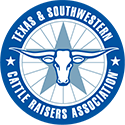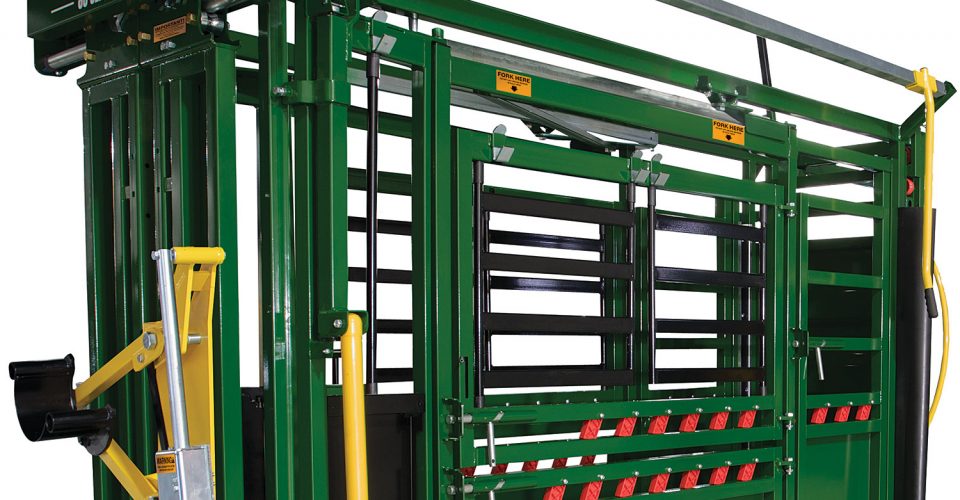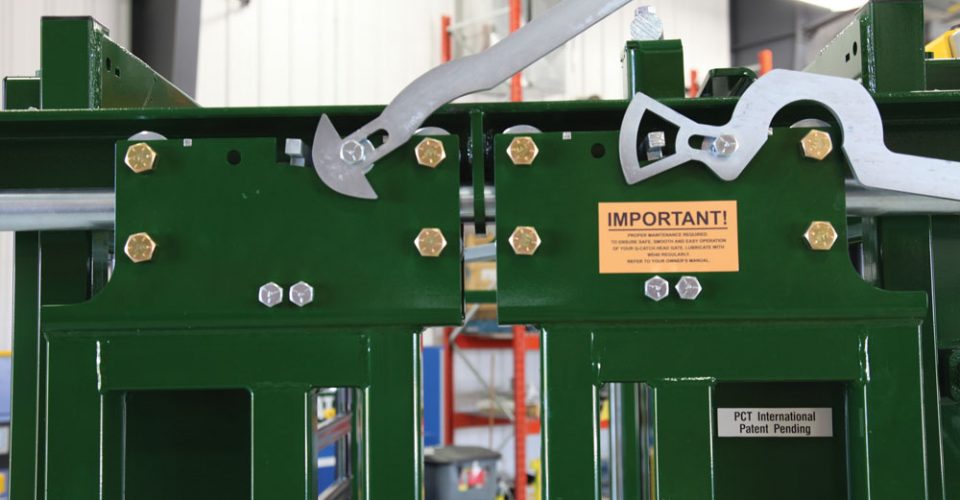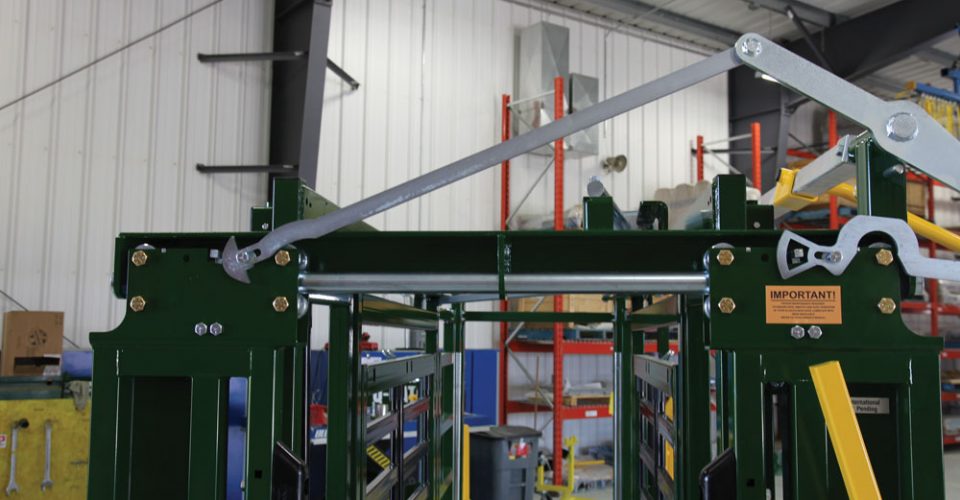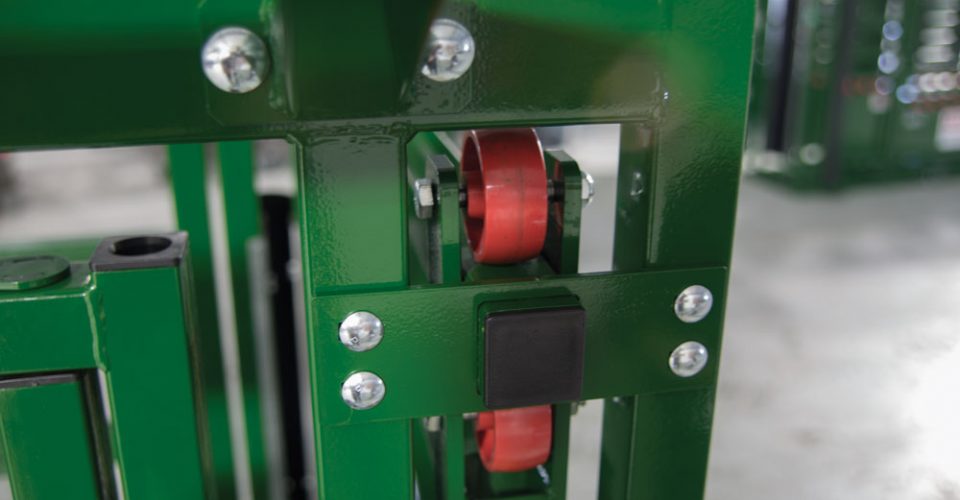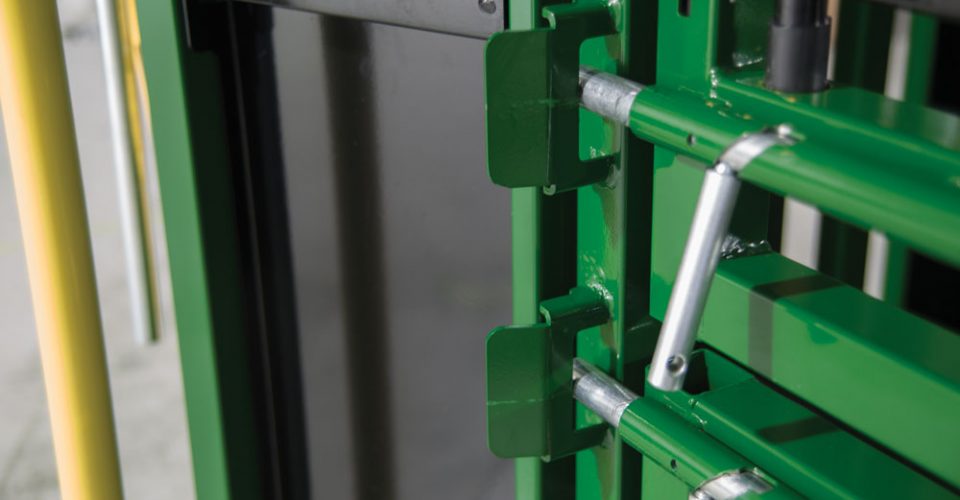Squeeze Chute Maintenance
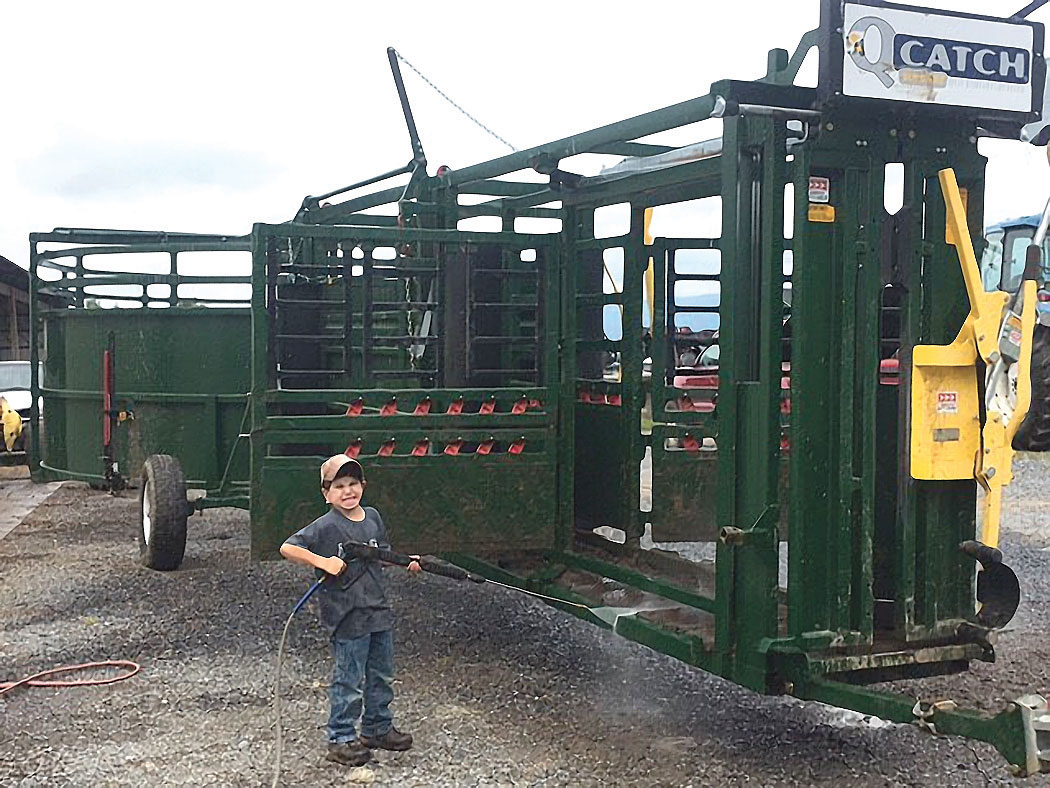
By Kristin Lewis Hawkins
There’s no doubting the squeeze chute as one of the most important modern ranching inventions. The mechanical chute’s simple ability to hold livestock safely for examination, weighing, marking or medicating cannot be duplicated. It can also be one of the most-used pieces of large equipment a rancher can invest in and depend upon. Keeping those chutes in tip-top shape will ensure you can continue to increase ranch productivity and get the most out of your material, labor and time.
Safety First!
Most modern chutes, both manual and mechanically assisted, have been designed to operate with minimal upkeep and safety. However, many chutes aren’t positioned where they can be shielded from the weather, and they have a lot of heavy-duty moving parts. The safety of humans and animals should be a top priority for everyone involved in working cattle around heavy equipment, so basic knowledge of chute operation should be first on the list for everyone working in the area. This includes hands that are not working levers or gates, in case an emergency arises or someone simply can’t get into position fast enough — everyone should know how the chute works and where the danger spots are.
While the basics of chute operation are pretty universal, the details can vary from maker to maker. Old hands can take for granted that they’re familiar with their own setup, but a neighbor helping out for the day may not be as experienced with that make or model.
Maintenance
Regular chute maintenance can ensure safe operation for ranchers and livestock. Arrowquip Cattle Handling and Livestock Equipment have offered the following valuable chute maintenance tips to keep in mind when it’s time to work cattle.
Please refer to your equipment’s manual for the particular details of maintaining your model. However, some maintenance tasks can be performed on all chutes, no matter the equipment’s maker or age.
- Take a good look at the chute, flooring and surrounding area.
- Ensure rolling wheels, gates and levers move freely and quietly.
- Make sure bolts are tight and cotter pins and clips are in place.
- Verify hydraulic fluid levels are within the safety range, if applicable.
- Grease hinge points as necessary, at least twice a year or more with heavier use.
- Wash chute and flooring after use and allow drying to minimize corrosion.
Keeping these basic maintenance tips in mind will go a long way to keeping your cattle chute in top shape for years of reliable use.
The model used for this maintenance demonstration is the Arrowquip Q-Catch 86 chute. While your chute may not have the same parts or specifications, you can get a general idea of the type of tasks required to keep a chute running quiet and trouble-free.
Refer to your chute maker for specific information on your model.
1. Grease nipple on the top of head gate control.
- Before the first use and any time it is needed, use a grease gun on the main pivot point on the head gate
2. Check the door hammers at the front.
- Ensure the bolts on the hammers can be moved by hand, so there is enough play for the door hammers to move freely in their slots.
- Ensure the mounts at the back have some play, as well.
3. Check the tension on the door rollers.
- They should be tight enough to not be moved by hand, but not overly tight so that the rollers bind.
- You should feel the roller moving when you open the head gate.
4. Ensure all moving components are free of debris and functioning properly.
- Brake cleaner is recommended for degreasing when necessary.
5. Lubricate moving parts with spray lubricant as necessary.
- Regular lubrication is recommended on the Q-Catch Shaft, cam-slam latches, rolling door wheels, squeeze pivot points, and in light application on the squeeze lock box.
Arrowquip Suggests Keeping These Tools Around for Chute Maintenance:
- Grease gun
- Spray lubricant such as WD-40®
- Brake Cleaner
- Wrench set (optional)
Top 5 Recommended Tasks
- Install the chute on a solid, even surface.
- Clean the chute after each use.
- Keep chute components moving smoothly with a spray lubricant such as WD-40®
- Remove build-up before it becomes a problem.
- Call chute manufacturer’s customer service if you have questions.
Thanks to Arrowquip for providing the information, tips and pictures for this article. More information on their equipment is available at arrowquip.com and 1-866-383-7827. ❚
“Squeeze Chute Maintenance” is excerpted from the July 2017 issue of The Cattleman magazine.
